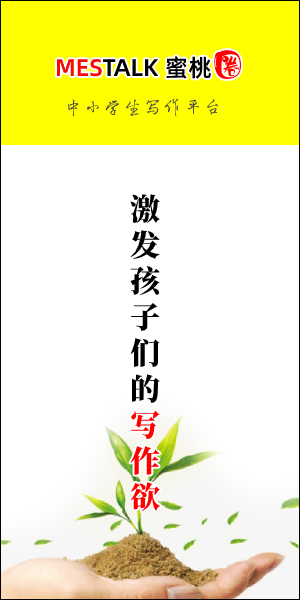Tropospheric lidar is a crucial instrument used in atmospheric research for probing the vertical distribution of aerosols, clouds, and other atmospheric constituents. However, the accurate retrieval of atmospheric parameters from lidar measurements can be affected by various factors, including signal saturation. Saturation occurs when the received signal intensity exceeds the detector's dynamic range, leading to distorted measurements. In this article, we delve into the analysis of saturation signal correction techniques in tropospheric lidar systems.
Signal saturation in tropospheric lidar can occur due to several reasons:
High Aerosol or Cloud Concentrations: In regions with dense aerosols or clouds, the lidar signal can become saturated as the backscattered light intensity exceeds the detector's capacity.
Strong Return Signals: Signals from close-range scattering or strong atmospheric backscatter can also lead to saturation.
Instrument Parameters: Factors such as laser power, receiver gain, and integration time settings can influence the likelihood of signal saturation.
Signal saturation can introduce significant errors in lidar measurements and subsequent data analysis:
Distorted Profiles: Saturation can distort the lidar signal profiles, leading to inaccuracies in the retrieved atmospheric parameters such as aerosol optical depth, extinction coefficient, and backscatter coefficient.
Loss of Information: Saturated regions in the lidar signal may contain valuable information about the atmosphere that becomes unusable due to saturation effects.
Reduced Measurement Range: Saturation limits the effective measurement range of the lidar system, particularly in regions with high aerosol or cloud concentrations.
To mitigate the effects of signal saturation in tropospheric lidar measurements, several correction techniques have been developed:
Dynamic Range Adjustment: Adapting the detector's dynamic range by adjusting the receiver gain or laser power can help prevent saturation in high-intensity signal regions.
Thresholding: Applying a threshold to the received signal to identify and discard saturated data points before further analysis.
Saturation Correction Algorithms: Various algorithms have been developed to correct saturated lidar signals, such as the log-linear interpolation method, which estimates the unsaturated signal intensity based on neighboring data points.
Deconvolution Techniques: Employing deconvolution algorithms to recover the true signal from saturated measurements by modeling the lidar system's response function.
Despite the effectiveness of saturation correction techniques, several challenges and considerations need to be addressed:
Accuracy: The accuracy of saturation correction algorithms depends on the assumptions made about the lidar system's response function and the underlying atmospheric conditions.
Computational Complexity: Some correction algorithms may involve computationally intensive processes, which can increase processing time and resource requirements.
Data Quality: Saturation correction techniques should be carefully validated to ensure that corrected lidar data maintain quality and consistency with unsaturated measurements.
Adaptability: Saturation correction methods should be adaptable to different lidar configurations and atmospheric conditions to ensure their widespread applicability.
Saturation signal correction is essential for accurate and reliable tropospheric lidar measurements. By understanding the causes and impacts of signal saturation and employing appropriate correction techniques, researchers can enhance the quality and utility of lidar data for atmospheric research and monitoring applications. Continued advancements in saturation correction algorithms and validation methods will further improve the capabilities of tropospheric lidar systems in studying atmospheric processes and climate dynamics.
Mattis, I., and Tesche, M. (2018). Correcting detector saturation effects in the aerosol backscatter coefficient observed with the Jenoptik ceilometer CHM15k. Atmospheric Measurement Techniques, 11(6), 3779-3790.
Papayannis, A., Mamouri, R., Amiridis, V., and Balis, D. (2008). Systematic lidar observations of Saharan dust layers over Athens, Greece in the frame of EARLINET project (2004-2006). Journal of Geophysical Research: Atmospheres, 113(D10).
Groß, S., Esselborn, M., Weinzierl, B., Wirth, M., Fix, A., and Petzold, A. (2013). Aerosol classification by airborne high spectral resolution lidar observations. Atmospheric Chemistry and Physics, 13(1), 2487-2505.
start="5">Data Fusion: Integrating data from multiple lidar systems or combining lidar data with other remote sensing techniques, such as radar or passive sensors, can improve the accuracy and robustness of saturation correction methods.
Real-Time Processing: Developing real-time saturation correction algorithms is essential for applications requiring immediate access to accurate lidar data, such as weather forecasting and air quality monitoring.
Uncertainty Estimation: Quantifying the uncertainty associated with saturation correction procedures is crucial for assessing the reliability and confidence level of corrected lidar measurements.
User Training and Education: Proper training and education of lidar operators and researchers on the use and limitations of saturation correction techniques are necessary to ensure the correct interpretation and analysis of lidar data.
Advanced Correction Algorithms: Continued research into advanced saturation correction algorithms, including machine learning approaches and data-driven methods, can further enhance the accuracy and efficiency of lidar data processing.
Integration with Numerical Models: Integrating saturation correction algorithms directly into atmospheric models can improve the consistency between lidar observations and model simulations, enabling more accurate and reliable atmospheric predictions.
Field Campaigns and Validation Studies: Conducting comprehensive field campaigns and validation studies under diverse atmospheric conditions can provide valuable insights into the performance and limitations of saturation correction techniques in real-world scenarios.
Standardization and Best Practices: Establishing standardized protocols and best practices for saturation correction in tropospheric lidar measurements can facilitate data exchange, comparison, and interoperability among different research groups and institutions.
Operational Implementation: Transitioning saturation correction algorithms from research prototypes to operational lidar systems requires collaboration between scientists, instrument manufacturers, and end-users to ensure seamless integration and compatibility.
Saturation signal correction plays a critical role in ensuring the accuracy and reliability of tropospheric lidar measurements for atmospheric research and monitoring applications. By addressing the challenges and considerations associated with saturation correction techniques and embracing future directions for innovation and advancement, the scientific community can harness the full potential of tropospheric lidar technology to better understand and address pressing environmental challenges, including climate change, air quality, and extreme weather events.
